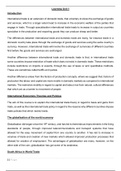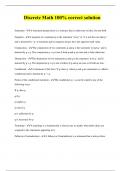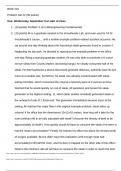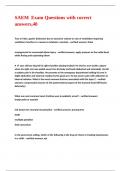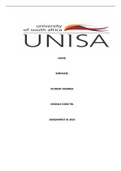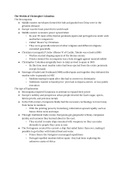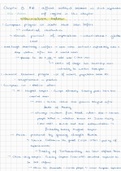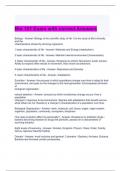Introduction
International trade is an extension of domestic trade, that voluntary involves the exchange of goods
and services, which to a larger extent lead to increase in the economic welfare of the parties that
engage in trade. Through specialisation international trade leads to increase in output as countries
specialise in the production and exporting goods they can produce cheap and better.
The differences between international trade and domestic trade are many, for instance trade in a
domestic country take place through the exchange of goods and services using the same country’s
currency. However, international trade will involve the exchange of currencies of different countries
first before the goods and services are exchanged.
Another difference between international trade and domestic trade is that, in international trade
some countries impose restriction of trade which does not exist in domestic trade. These restrictions
include restrictions on imports or exports, through the use of taxes or and quantitative methods.
These are sometimes called tariffs and quotas.
Another difference arises from the factors of production concepts, where we suggest that, factors of
production like labour and capital are more mobile in domestic markets as compared to international
markets. The restrictive mobility in regard to capital and labour rise from natural, cultural differences
that which act as a barrier to movement of people.
International Economics Theories and Policies
The aim of this course is to explain the international trade theory in regard to basis and gains from
trade, as well as the international trade policy in regard to the reasons why different countries impose
trade policies that which restrict trade.
The globalisation of the world economy
Globalisation did began since the 19th century, and has led to tremendous improvements in the living
standards of people, through improved telecommunications and transport systems that have
allowed for the easy movement of capital from one country to another. It has led to increase in
volumes of trade and creation of new markets which allowed improved production processes that
allowed for creation of employment. The advantages of globalization are many, however, on the
other side of the coin, globalization has got some of its weakness.
South Africa in World Trade
2|Page Theron Group of Tutors Randburg and Pretoria 0719507447
,The openness of the South African economy in regard to international trade is estimated to be
around 40%, which implies that South African economy can be regarded as an open economy. This
openness went down during the period between 1985 and 1994, during which South Africa was
under sanctions imposed on the apartheid government, by the international community. Despite
these sanctions, the country remains as one of the major suppliers of precious and base metals and
other minerals in the world markets.
In the same period, the country was also under financial sanctions, which resulted in large-scale
capital flight. This refers to outward movement of foreign investment funds, which led to slowed
economic growth. The slow economic growth did arise from restrictive monetary policy and fiscal
policies that have been implemented with a goal of reducing imports. The reduction in imports was
also not accompanied by reduction in exports, instead exports did rose to a larger extent. Close to
the 1994 election the sanctions were removed to allowed the economy to grow at a much greater
growth rate.
Gravity Model
The theory argued that the bilateral trade between two countries is based on the economic sizes
(often using GDP measurements) and distance between the two countries. According to the study
guide, gravity model postulates that the bilateral trade between two countries is proportional or least
positively related, to the product of the two countries’ GDPs and that it is inversely related to the
distance between the two countries. Putting it differently, the theory suggests that countries that are
close together and secondly with higher GDP, tend to have greater volumes of trade, as compared
to two small countries that are actually far away from each other.
The theory might not be applicable to real world situations however, to some extent it is well
applicable. For instance, the major trading partners of South Africa are very far away from the Africa,
but looking on the other hand, America’s major trading partners Mexico and Canada are close. But
also remember America trade with other big economies that far away.
South Africa is increasingly becoming the port of entry into Africa, with significant amounts of imports
being re-exported to other parts of Africa. These are mainly manufactured goods including
machinery and mechanical appliances, electrical equipment, television sets and video cassette
recorders.
South Africa remains partly dependent on primary sector commodities for its exports, but the
contribution by manufactured and semi-processed goods has grown significantly. At present,
roughly 35 percent of South Africa's exports are primary sector commodities such as gold, platinum
3|Page Theron Group of Tutors Randburg and Pretoria 0719507447
,group metals, coal, diamonds, chrome, and agricultural products. Unlike many developing countries
which depend on the exports of a few primary products, South Africa can be classed as a semi-
industrialized country and the contribution of the industrial sector to exports is increasing steadily.
Motor vehicle exports contributed about 5 percent to South Africa's exports in 2006. Machinery and
equipment are, as is to be expected for a developing economy, the most important of South Africa's
imports. South Africa also imports the bulk of its oil, despite having significant oil-from-coal capability
in Sasol (a private company regulated by the government).
Learning Unit 2
4|Page Theron Group of Tutors Randburg and Pretoria 0719507447
, Why nations trade: the classical theory of trade
Introduction
The aim and goal of this chapter is to identify and explain the views of the mercantilists in regard to
international trade. The concept of absolute advantage and comparative advantage will also be
explained in this chapter, as well the meaning of equal advantage. The basis for trade will also be
explained, and the relationship between opportunity cost and relative commodity prices will also be
elaborated. Gains from trade under constant costs conditions, terms of trade will also be explained
further. Before the end of the chapter, some of the criticisms of the classical theory will be provided.
The importance of dynamic gains from international trade will be explained as well.
Mercantilists’ view on trade
Mercantilists were a group of European writers who included merchants, bankers, government
officials and philosophers, and believed that trade is a zero-sum game and did encouraged
economic nationalisation as their way to successful international trade. Mercantilists maintained that
the way for a nation to become rich and powerful was to export more than it imported. Their
motivation was based on self-interest, and did not care about the other trading partner, this was
supported by the notion that, the gains of winners are offset by the losses of the losers.
With the assumptions, the mercantilists argued that the economic welfare of a country depends on
a strong foreign trade surplus. They also believed that the greater the trade surplus the country
have, the richer the country will be, through the great ability to gain more gold, silver and other
precious metals. As a result, the mercantilists encouraged their governments to stimulate more
exports and discouraging of imports, more importantly, importation of luxury goods. The argument
behind the believes of the mercantilists was that, more precious metals in a country with trade
surplus will boost employment, domestic output, and prosperity of the country.
In order to achieve these goals, the mercantilists postulated that, governments should encourage
exports and restrict imports through the use of tariffs, quotas and other commercials policies. The
disadvantages or weakness of the arguments behind the mercantilists is that, a prolonged surplus
will make the country’s exports in the future less attractive, raise domestic inflation in the long-run.
Classical Theorists
5|Page Theron Group of Tutors Randburg and Pretoria 0719507447

